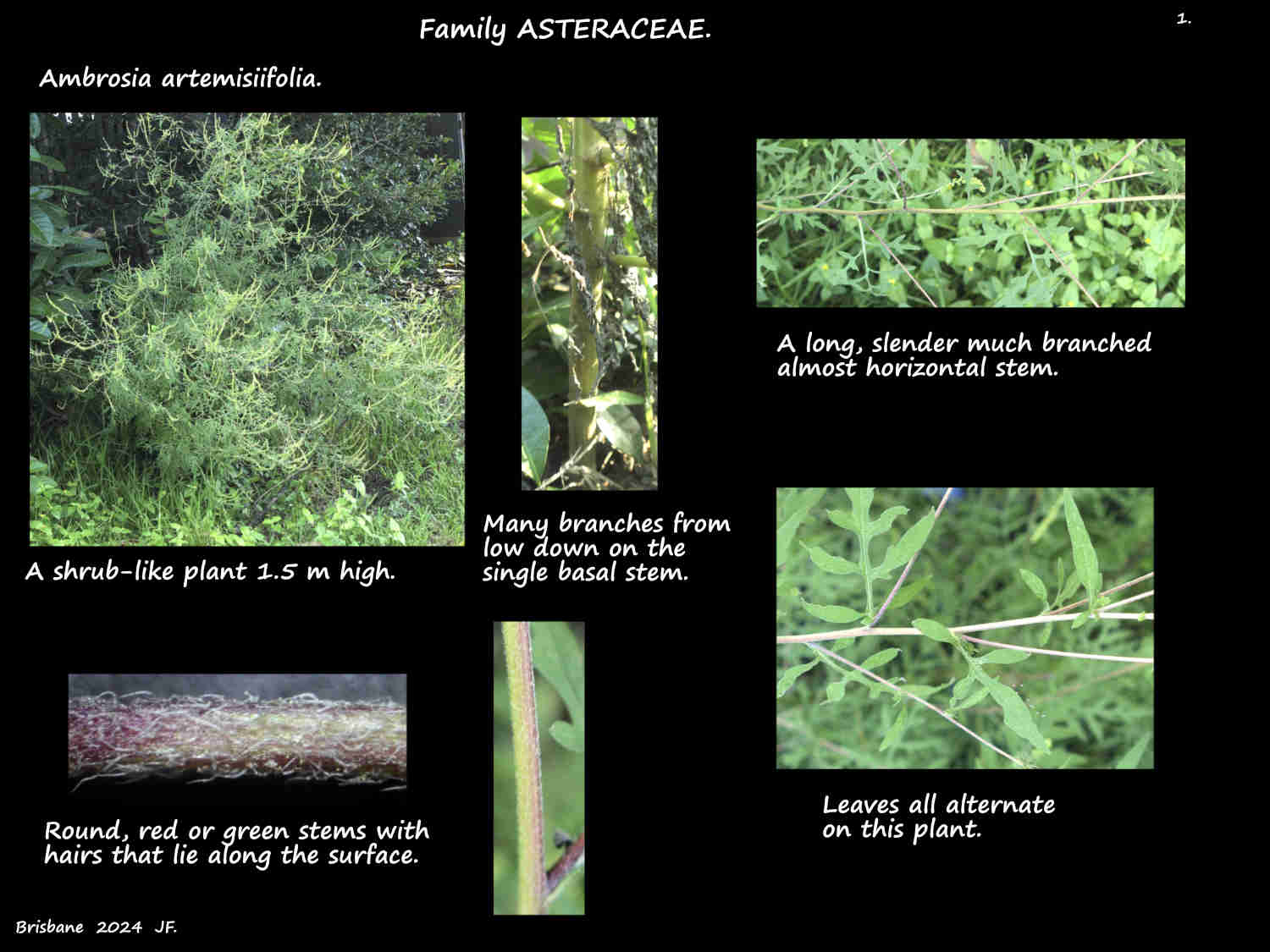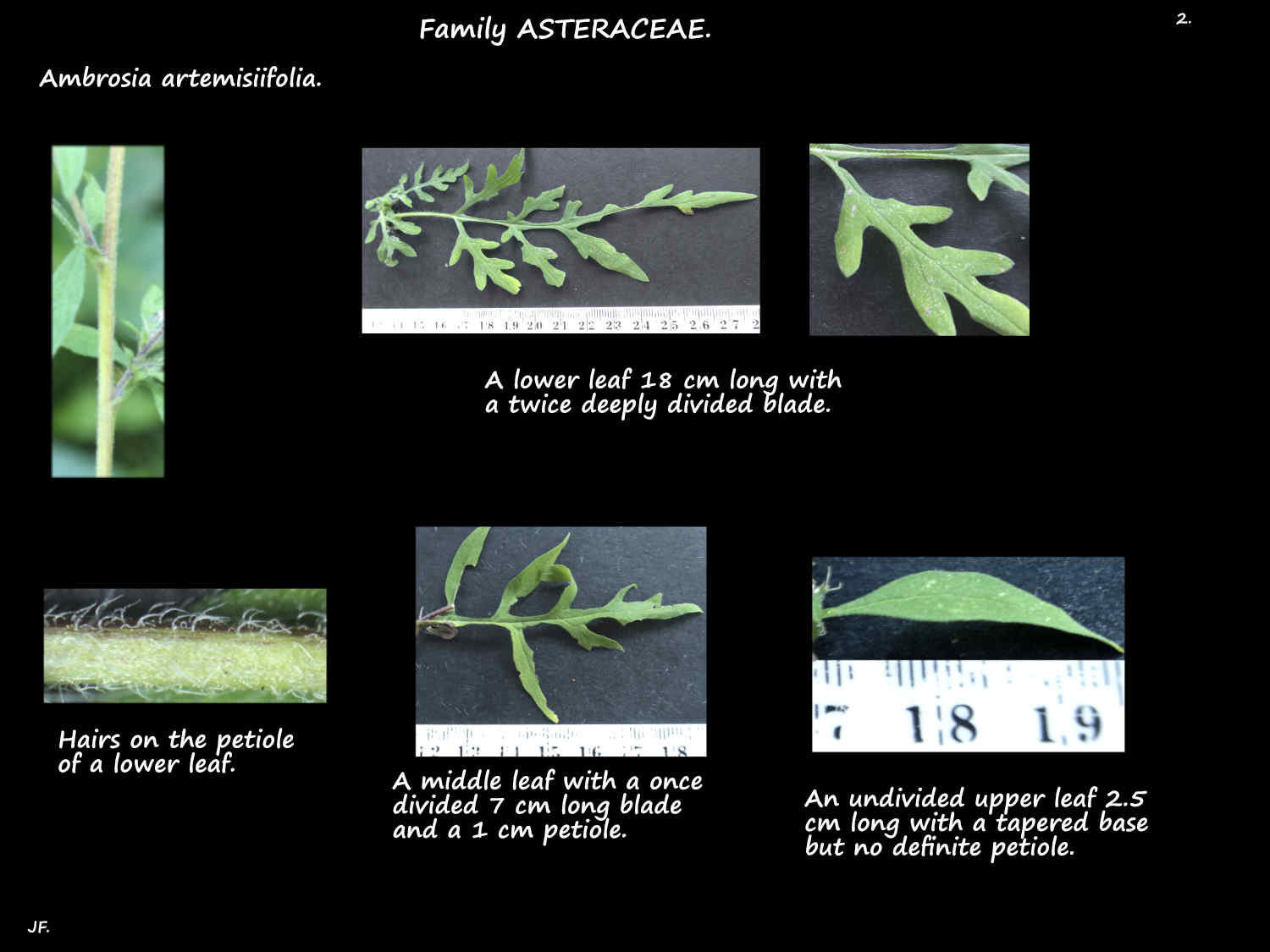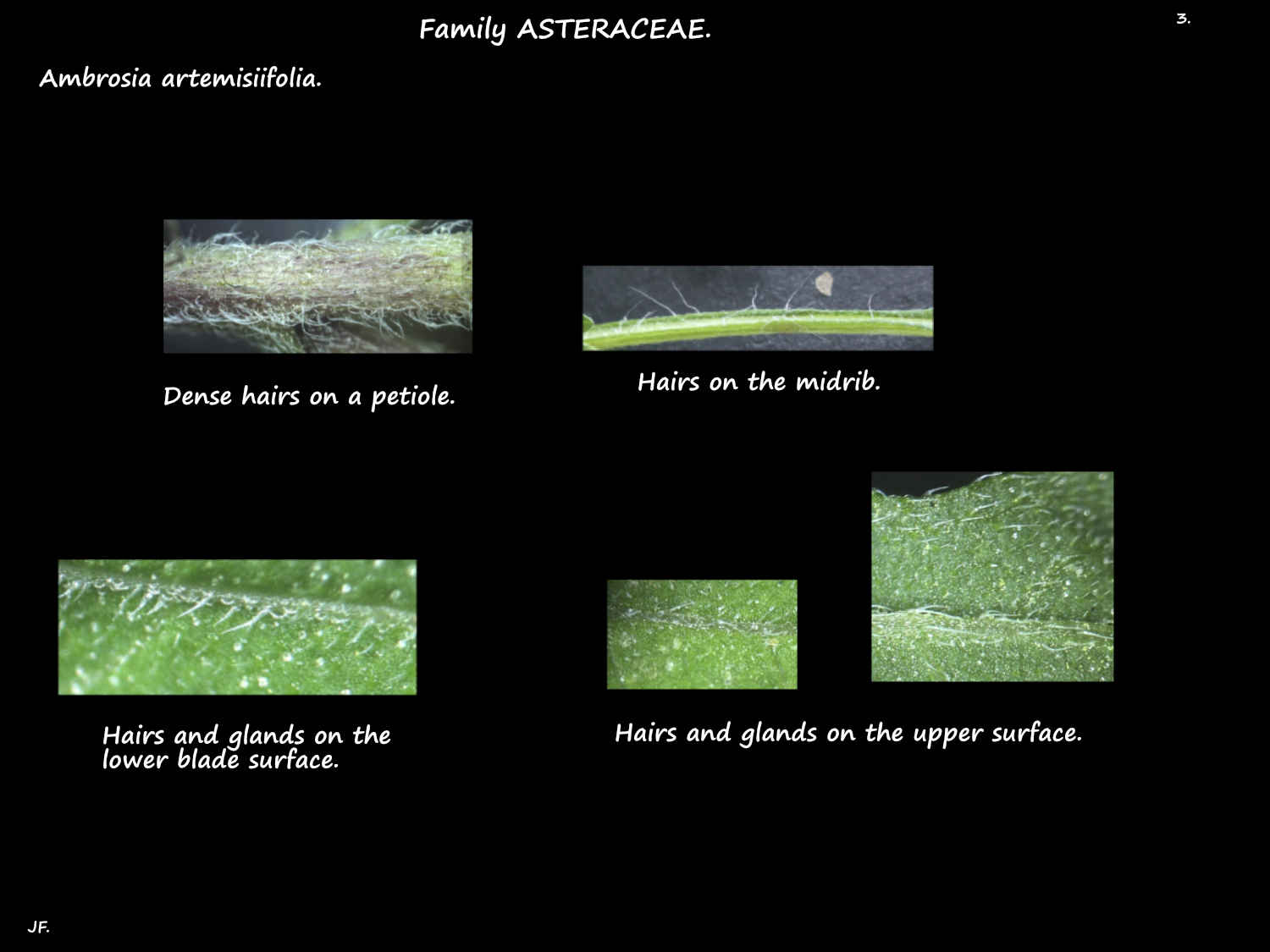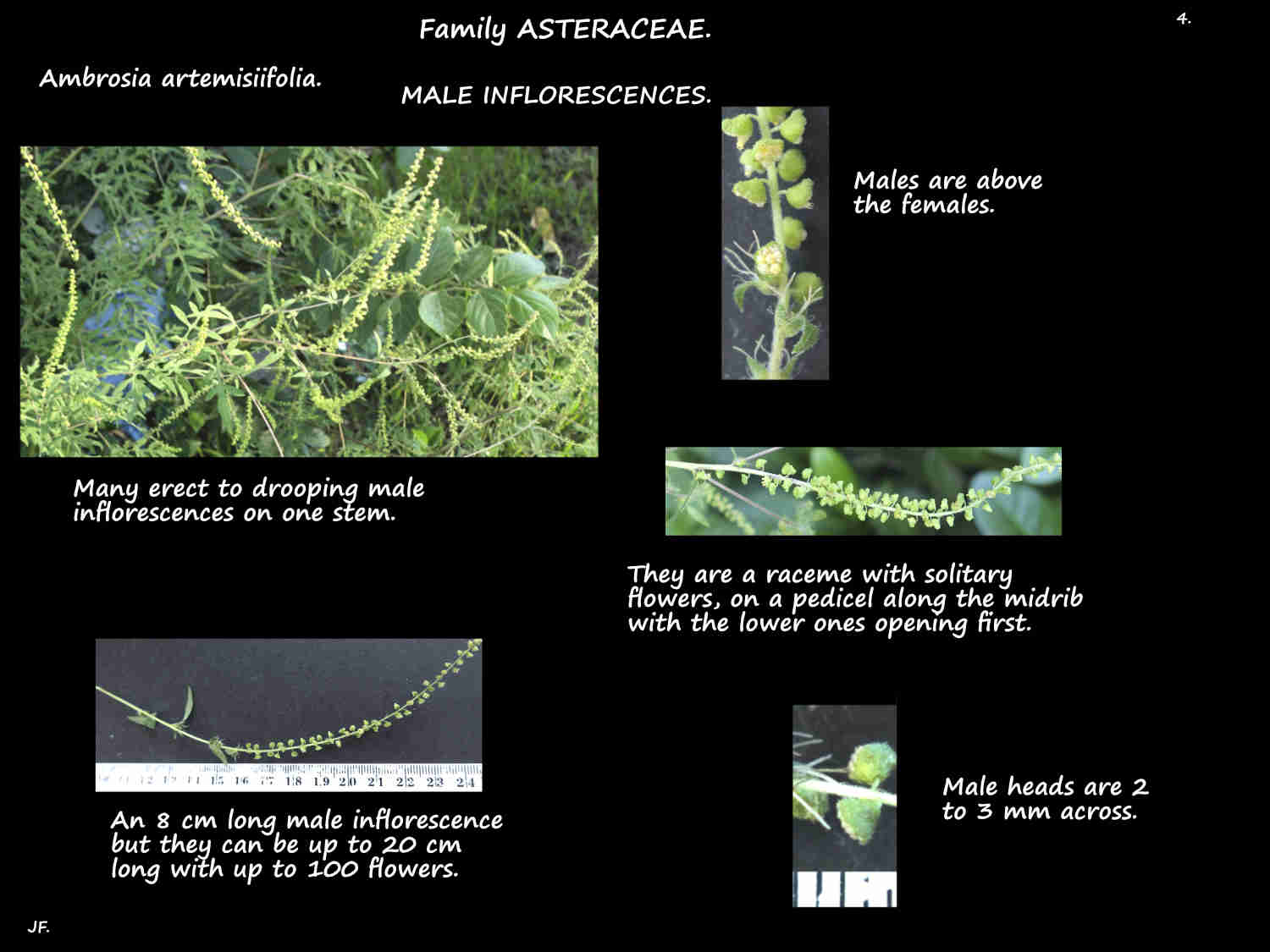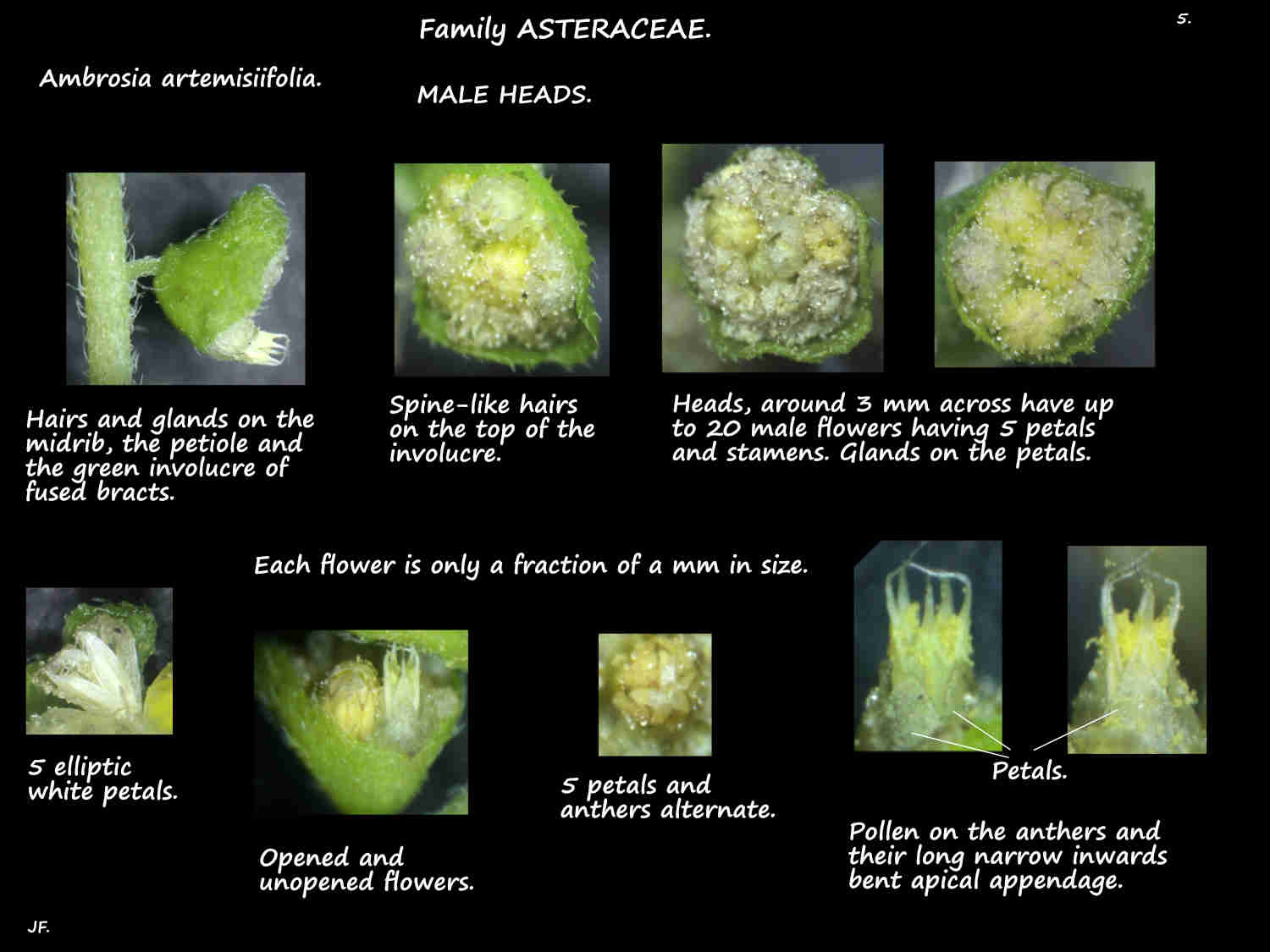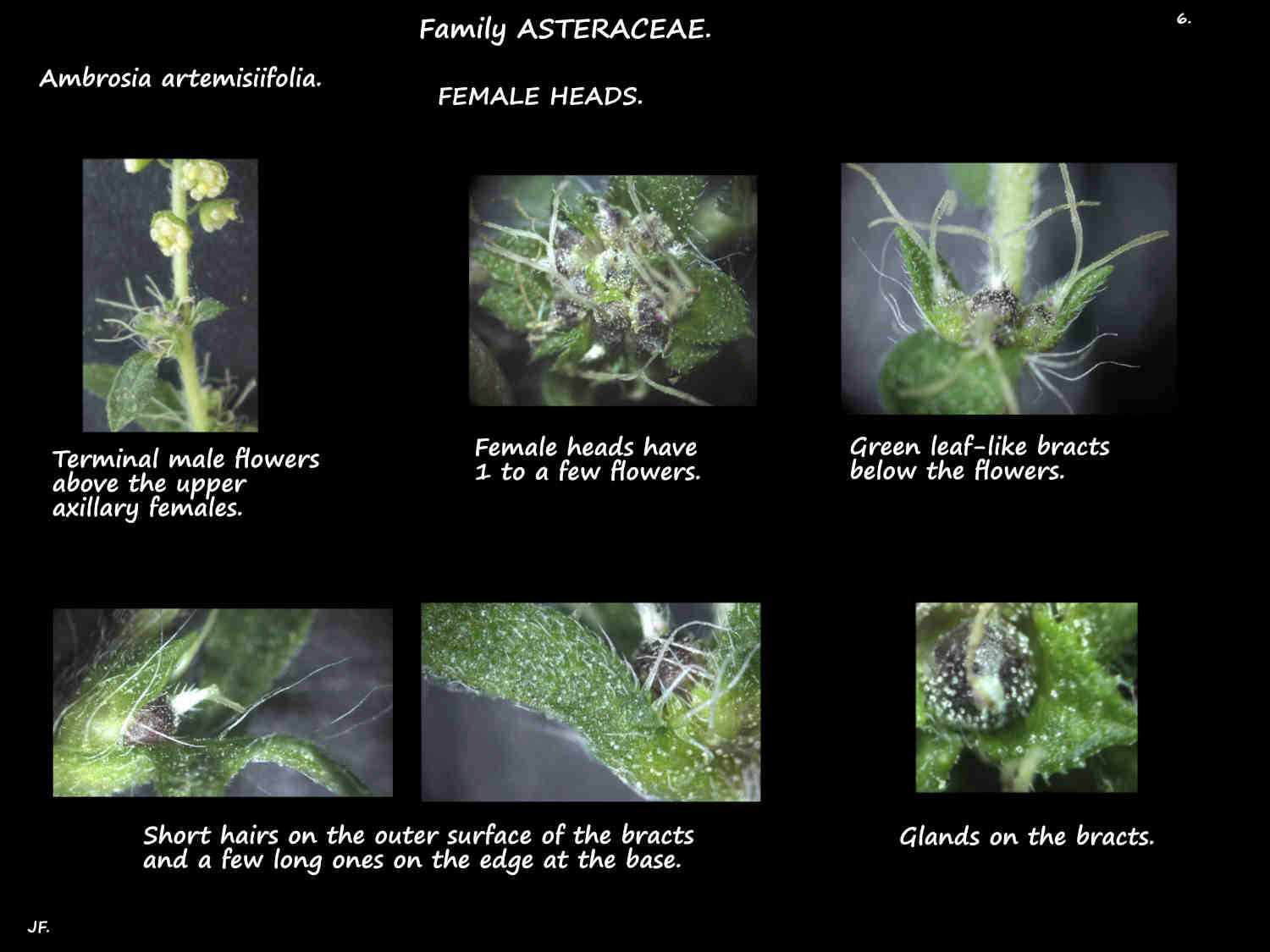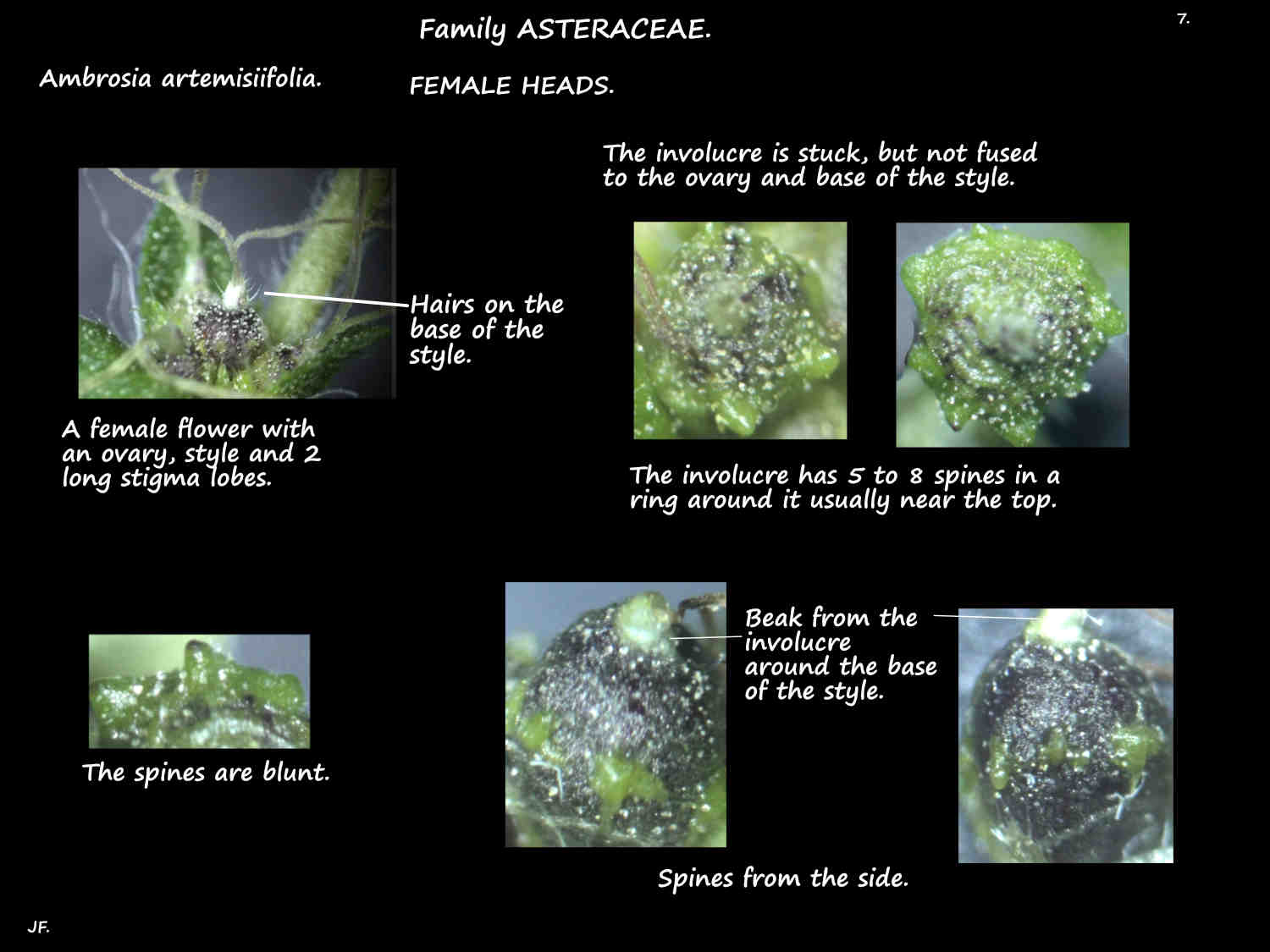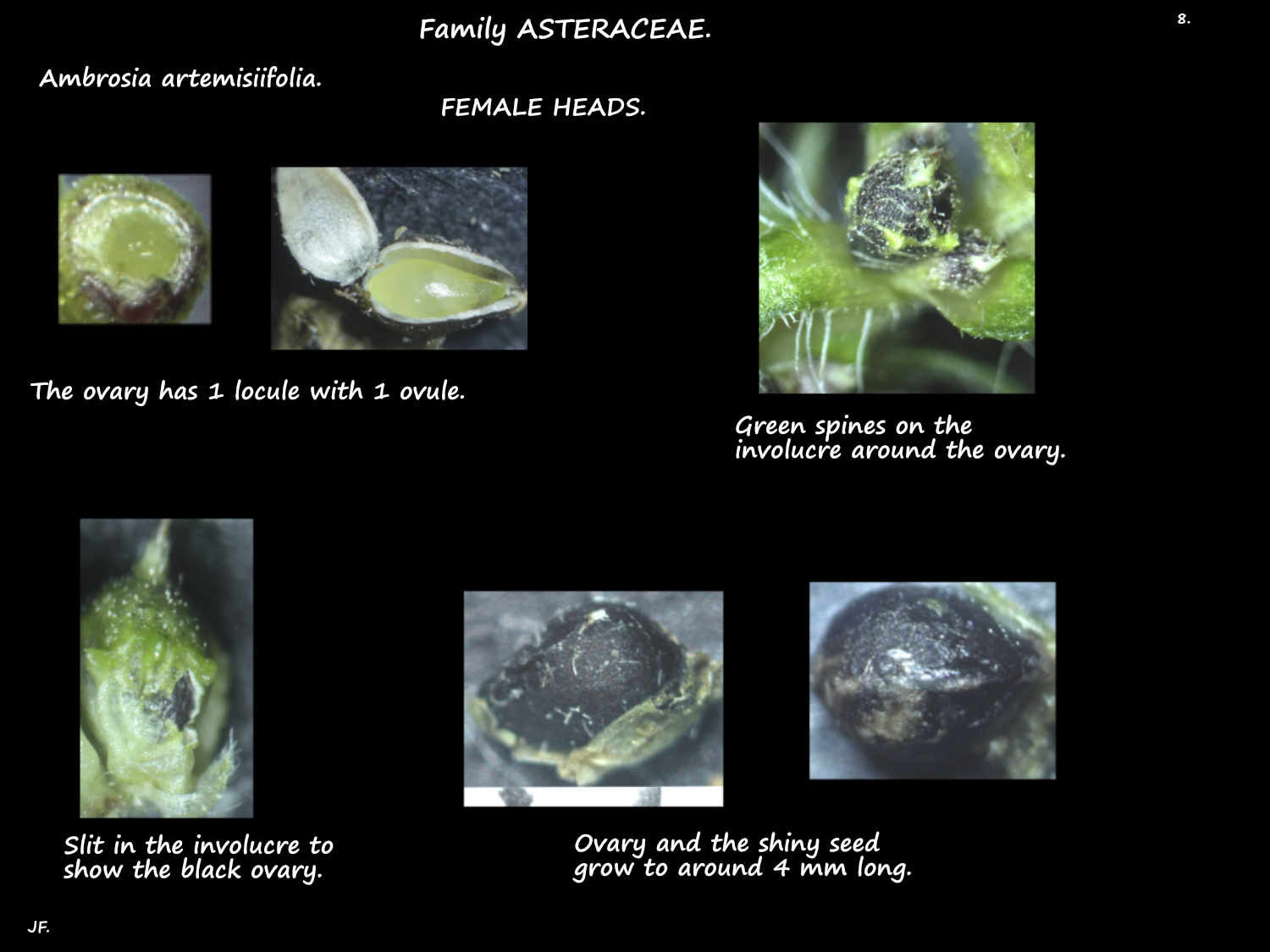Ambrosia artemisiifolia.
The naturalised Annual or Common ragweed is widespread in S. E. Queensland.
It is an environmental weed in some areas.
They are small much-branched shrub-like herbs up to 2 (3.5) m high.
Young green and older reddish-brown stems are round.
Young stems have hairs that lie along the surface.
Leaves are alternately arranged but the upper ones may be opposite.
They have a petiole to 2 to 3 cm long and a blade up to 16 cm.
The lance-shaped to ovate blade is typically deeply lobed to twice divided (bi-pinnate).
Leaves higher up the stems become smaller with a shorter petiole and less divided.
The terminal leaves, with a short or no petiole are small and undivided.
The grey-green leaves often have short or long hairs on both surfaces but mainly the lower.
Each plant has heads of male and female flowers in separate inflorescences.
Males greatly outnumber the females.
Terminal spike-like male inflorescences are up to 20 cm long.
The shallow conical heads on the spikes are 2 to 3 mm across.
The heads, on hairy stalks consist of up to 20 dense flowers in an involucre.
The cup-shaped involucre, of fused bracts or phyllaries has hairs and glands on the outer surface.
The tightly packed florets (small flowers) in the heads have 5 petals (with glands), 5 stamens and an aborted ovary.
The anthers have a long narrow apical appendage that often bends in at the top.
The greenish, cream or white flowers look yellow when the pollen is released.
Female heads, directly attached to the stem are in the upper axils below the males.
They may be a solitary flower or a small cluster.
Flowers are surrounded by leaf-like bracts with long and short hairs.
Flowers have no petals just an ovary with a single locule and a style with 2 long stigma lobes.
The involucre is stuck, but not fused to the ovary and the base of the style.
It has a ring of 5 to 8 blunt spines under 1 mm long near the top.
The fruit (achenes or cypselas) are dry and indehiscent.
The blackish fruit, around 3 mm long have one hard black seed.
The hardened involucre forms a beak at the top of the fruit.
J.F.
